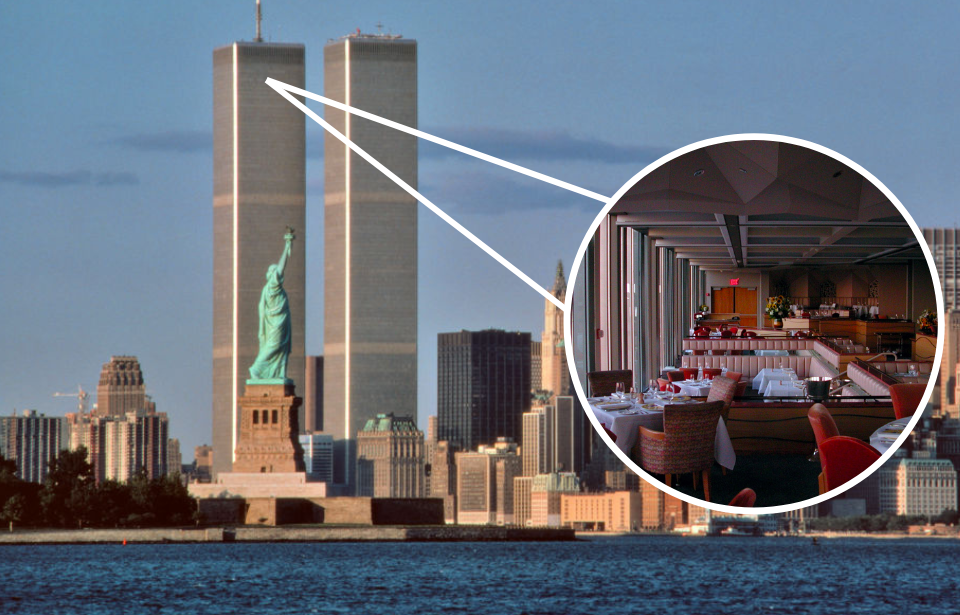The iconic Windows on the World was more than just a restaurant; it was a symbol of New York City’s grandeur and ambition. Situated high above the bustling streets, it offered a dining experience that was literally above all others. From its vantage point, guests could indulge in gourmet cuisine while taking in the breathtaking views that spanned across the city’s vast skyline.
Located on the 107th floor of the World Trade Center
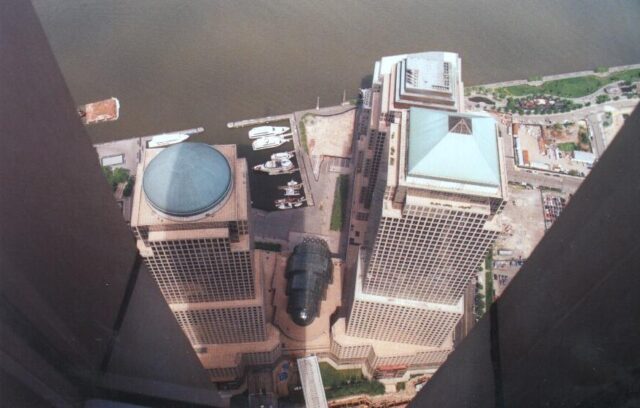
Perched on the 107th floor of the North Tower of the World Trade Center, Windows on the World was a crowning feature of the city’s famed skyline. It was a place where people from all corners of the globe could gather to celebrate life’s special moments, all while hovering above the city that never sleeps.
The restaurant’s unique location allowed diners to gaze out over the island of Manhattan, with views extending to Brooklyn and New Jersey. The stunning vistas included landmarks such as the Statue of Liberty, the Brooklyn Bridge, and the Empire State Building, making every visit to Windows on the World a memorable event.
History and the creation of Windows on the World
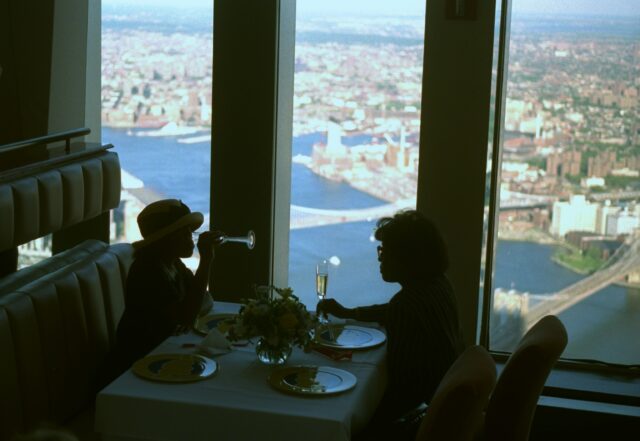
Joe Baum, a visionary in the world of hospitality, dreamt of creating a destination that would epitomize the city’s love for high life and fine dining. His brainchild, Windows on the World, was to be a place where the food was as impressive as the views and where every guest could feel on top of the world.
The Port Authority of New York and New Jersey saw the potential in Baum’s vision and joined forces to turn this dream into a reality. Their combined efforts led to the creation of a space that would become a beacon of New York City‘s cultural and culinary scene.
Design and its first opening as a private club
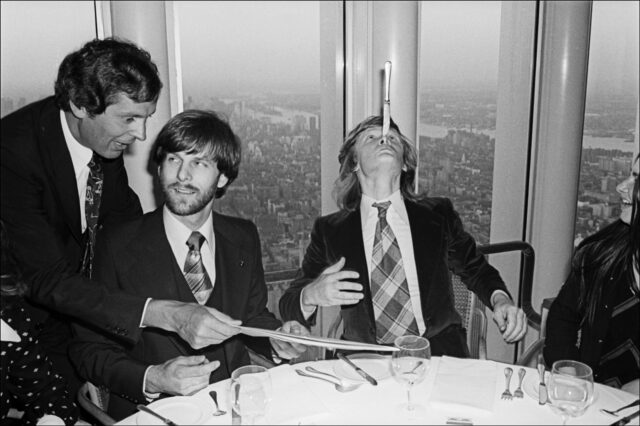
The design of Windows on the World was entrusted to the renowned architect Warren Platner. His innovative approach, coupled with the artistic contributions of graphic designer Milton Glaser, resulted in an environment that was both sophisticated and inviting. The interior reflected the grandeur of the city below, with touches that spoke to the elegance of the era.
To ensure that the cuisine matched the restaurant’s lofty setting, Baum enlisted the expertise of culinary legends James Beard and Jacques Pepin. Together, they crafted a menu that would delight even the most discerning palates, combining international flavors with a touch of New York flair.
Windows on the World initially opened its doors as a private club in April 1976. This exclusive beginning set the stage for what would become one of the most sought-after dining experiences in the city. It wasn’t long before the restaurant opened to the public, inviting everyone to enjoy the world-class dining and unparalleled views.
The Windows on the World’s highlights and challenges
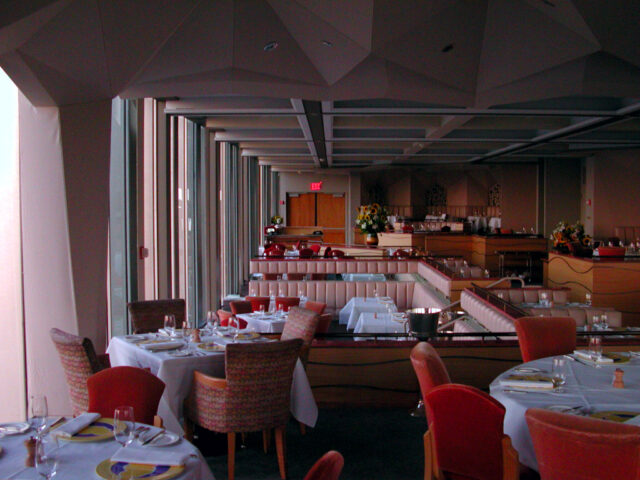
The heart of Windows on the World was its main dining room, where guests could enjoy a diverse array of dishes that blended international influences with classic American cuisine. Adjacent to the main dining area was the Hors d’Oeuvrerie, a space dedicated to the art of appetizers, where patrons could sample an assortment of small bites from around the world.
For wine enthusiasts, the Cellar in the Sky was a highlight of the Windows on the World experience. This exclusive wine room featured an extensive list of vintages from renowned vineyards, carefully selected to complement the restaurant’s exquisite menu offerings.
The 1993 terrorist bombing of the World Trade Center was a dark chapter in the history of Windows on the World. The restaurant was forced to close its doors temporarily, but this closure was not the end. Following the bombing, changes in the lease agreement led to a period of renovation for Windows on the World. The restaurant was given a new lease on life, with updates that breathed fresh energy into its storied halls.
Tragedy and aftermath of 9/11 attacks on Windows on the World

The tragic events of September 11, 2001, brought an irreversible loss to the Windows on the World family. Seventy-nine employees, who had been part of the restaurant’s fabric, perished on that fateful day. The loss was not only a blow to the establishment but also to the community that had grown around it.
Chef Michael Lomonaco, who was the executive chef at the time, narrowly escaped the tragedy and became a central figure in the aftermath. He channeled his grief into action, spearheading relief efforts and co-founding the Windows of Hope Family Relief Fund to provide aid to the families of his fallen colleagues.
Read more: These Were the Most Popular Jobs 300 Years Ago
The decision not to include a fine dining establishment like Windows on the World in the new World Trade Center reflects a shift in priorities and the evolution of the city’s dining culture. However, the absence of a restaurant in the sky does not diminish the impact that Windows on the World had on the culinary world and on the hearts of those who experienced its wonders.
